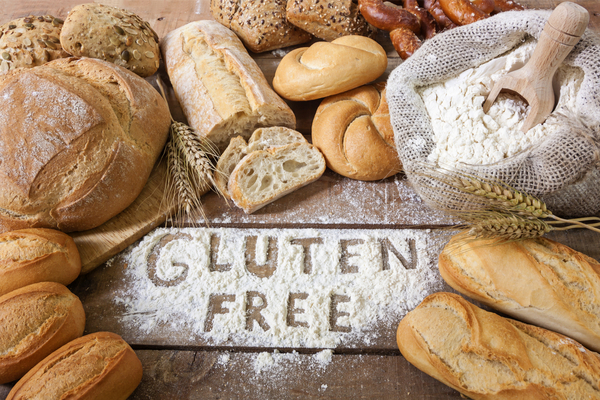About a year ago Jessica Mahar, who was diagnosed with celiac disease around 2005, got sick from a local restaurant because the menu said the dish was served with gluten-free brown rice, but actually was served with gluten-containing farro.
Even if a restaurant menu says an item is gluten free, new research says there’s a good chance some gluten will end up on your plate. Thirty-two percent of restaurant foods labeled gluten-free actually contain gluten, according to a new study published in the American Journal of Gastroenterology.
Eating gluten, a protein found in some grains, is dangerous for some people, while for others with gluten intolerance or gluten sensitivity, doing so causes a range of painful and embarrassing consequences. Symptoms include abdominal bloating, chronic diarrhea or constipation, vomiting, fatigue and gas.
You always take a risk. At the same time, a lot of restaurants are trying to cater to people with all different kinds of dietary needs,” said Marhar, an executive at a not-for-profit. “I’m not scared, but… simple ingredients are easier to keep track of.”
The researchers also found:
- The worst offenders were pizza and pasta, with gluten found in 53.2% of pizza samples and 50.8% of the pasta tested.
- The detection rate was higher at dinner, 34%, than at breakfast, 27.2%.
- Restaurant foods labeled gluten-free, or GF, were less likely to test positive for gluten in the western part of the U.S. than in the Northeast.
- Restaurants identified as fast-casual (no table service, higher quality food than traditional fast-food eateries) and casual (with table service) had lower detection rates than fast-food places.
- No restaurants were cited by name.
- The portable gluten tester Nima was used in the study. Its manufacturer has ties to the some of the authors from Columbia University and a company co-founder is among the authors.
- “We all want people to be vigilant, but not too worried,” said lead author Dr. Benjamin Lerner. “If you have celiac disease or it’s harmful for you to ingest gluten, you should feel comfortable asking the waiter how things are prepared.”
- A Nima device uses a pea-sized sample of food to test if gluten is present; it detects gluten at levels below 20 parts per million.
- Under a U.S. Food and Drug Administration regulation that took effect in 2014, a food must contain less than 20 parts per million of gluten if the manufacturer wants to label it gluten-free.
- The researchers’ results may not be reflective of all gluten-free restaurant food, the Celiac Disease Foundation said in a statement about the study. “Nima users may have been more likely to test foods they suspected were contaminated, potentially resulting in a larger proportion of foods testing positive. However, these results are compelling evidence of the challenges of maintaining a strict, gluten-free diet.”
- An estimated 1 out of 100 people worldwide has celiac disease, according to the National Institutes of Health. Plus, Mayo Clinic research in 2017 found that 3.1 million Americans avoid gluten, though they don’t have celiac – a number that tripled between 2009 and 2014.
- The global gluten-free product market, worth an estimated $4.72 billion in 2017, is expected to reach about $7.6 billion by 2024, according to New York-based Zion Market Research.
- Lerner said the gluten detected in foods in the study likely comes from cross-contamination, such as using the same pots to cook gluten-containing pasta and then gluten-free noodles. The way to fix this is to educate restaurant workers about the importance of preparing gluten-free food separately and washing down food-prep areas before starting on gluten-free dishes.
- “Being hyper-vigilant with avoiding gluten is associated with an increased rate of anxiety,” Lerner said. “We don’t want to raise too much alarm, but we want to raise awareness.”
- The researchers analyzed 18 months worth of data – 5,624 tests performed by 804 Nima users around the country who were willing to share the results of their tests.
—
Photo Credit: xamnesiacx / Shutterstock.com
